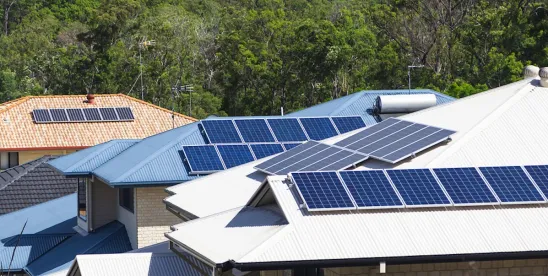Introduction
For many years, the residential solar industry experienced substantial growth precipitated by numerous factors including (i) attractive borrowing costs; (ii) governmental policies and incentives at the federal and state levels, including tax credits; and (iii) an increased focus on the purported benefits of renewable energy such as solar energy, most notably a significant reduction in a residential consumer’s monthly electric bill. Then, during the Biden Administration, the inflation rate spiked, and in response, the Federal Reserve raised interest rates multiple times, due to higher borrowing costs, decreased demand, changes in policies at the federal level and in key states. Notably, in the case of Sunnova Energy Corporation, a large solar energy entity based in Houston, the Trump Administration terminated $3 billion in loan guarantees that had been given by the Biden Administration. A multitude of solar energy entities and their contractors have sought bankruptcy protection or have gone out of business, wreaking havoc on residential homeowners who purchased or leased solar energy systems.
Typical Transaction
The purchase of a solar energy panel system (the “System”) by a residential homeowner is typically structured as follows:
- In response to a solicited or unsolicited communication with the homeowner, an entity enters into an agreement with the homeowner for the sale and installation of the System (the “Seller-Installer”), often described as a “Home Improvement Contract.” The Home Improvement Contract is a standard agreement that can be lengthy and, not surprisingly, favors the Seller-Installer. The Seller-Installer may be the solar energy entity itself, or a contractor or “partner” of the solar energy entity.
- The Home Improvement Contract usually includes a limited warranty that includes guaranteed electricity output. Because the installation of the System on the roof involves roof penetrations, the limited warranty will include a roof warranty.
- Along with entering into the Home Improvement Contract, the homeowner enters into a Loan and Security Agreement that provides 100% financing for the purchase and installation of the System, and sometimes, the purchase and installation of a new roof. The lender typically files a Uniform Commercial Code financing statement evidencing that the lender has a lien on the System. Like the Home Improvement Contract, the Loan and Security Agreement is a standard agreement that can be lengthy and, not surprisingly, favors the Seller-Installer.
- The total cost of the System, including the cost of financing, can range from about $40,000 to over $200,000 depending on the size of the System.
- In some instances, a homeowner will decide to lease rather than purchase a System.
Difficulties
The typical purchase or lease of a System appears straightforward, with upside potential in energy savings and no up-front costs for the homeowner. So what could possibly go wrong? Unfortunately, plenty. Outlined below are the difficulties homeowners have encountered:
- The installation was defective, resulting in roof leaks and water damage to the interior of the home.
- The System does not work or is not producing the electricity output that has been guaranteed.
- The Seller-Installer and the lender either do not respond to communications from the homeowner, or the response time is very slow, resulting in a failure to honor warranty claims.
- The Seller-Installer has gone out of business.
- The lender may describe the Seller-Installer as a “partner,” but later contend it has no liability or responsibility for the actions of the Seller-Installer.
- The solar energy entity that financed the purchase of the System has sought bankruptcy protection, making the situation more difficult and complicated.
- Despite problems with the System, homeowners often have agreed to have monthly loan payments automatically debited from a bank account. As a result, they find themselves paying month after month for a System with problems.
Such difficulties have resulted in significant frustrations and annoyance on the part of homeowners, who are left attempting to determine how to remove themselves from these difficulties.
Solutions
Resolving the difficulties homeowners have experienced and continue to experience has proved to be challenging, particularly if bankruptcy proceedings are involved. With bankruptcy proceedings, issues relating to the filing of a proof of claim, the dollar amount to be stated in the claim, the date on or before which a claim must be filed and where, and whether the bankrupt entity will attempt to accept or reject contracts, must all be addressed. The Home Improvement Contract, the Loan and Security Agreement, and a lease typically provide that all disputes must be resolved by final and binding arbitration, thereby eliminating the ability to commence litigation, and the law that governs the arbitration may be of a different state than the state where the homeowner lives. To compound matters, if a state has a consumer protection law such as Pennsylvania Unfair Trade Practices Consumer Protection Law, the law may impact the transaction and the arbitration proceedings.
While no two situations are precisely the same, as noted above, the transaction structures are similar. Further, and very importantly, each homeowner faces the prospect of having to spend potentially significant additional money on top of the considerable amounts spent to purchase a System.




 />i
/>i

